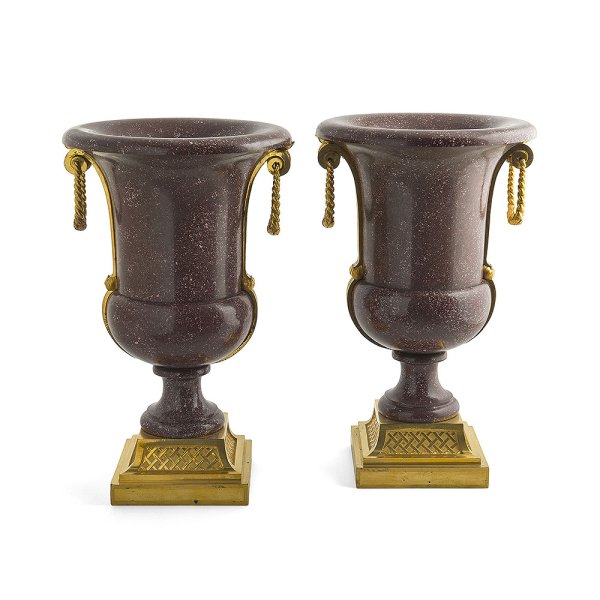Objets d’art
Clock
The clock was often the most precious object in an interior due to the complexity and sophistication of its mechanism. Given pride of place on the mantelpiece, it was the central element of the fireplace’s decoration. At the very end of the 18th century, themes for the decoration of clocks were often found in Greek and Roman history, and the subject here, Juno, daughter of Saturn, god of Time (Chronos in Greek), could not be more fitting. Legend has it that the goddess intervened with Janus, a god associated with the notion of beginning, after whom the first month of the year, January, was named. There are a variety of these so-called “chariot” clocks: Phaeton’s chariot, the chariot of victory, the chariot of the seasons, etc.

Paris, circa 1800
Chased and gilt bronze, enamel face, green antique marble base
Purchase, 1919
Inv. 21412
Firedogs
Firedogs are always placed in the fireplace in pairs, and their size is proportionate to that of the hearth. They are composed of the parallel bars on which the logs are placed, supported by the decorative front or “head.”

Paris, circa 1780
Chased, gilt and enamelled bronze
Loaned by the Musée du Louvre, 1901
Inv. LOUVRE OA 5266 A-B
Vases
The pineapple, an American fruit, first came to Europe in the 16th century, but due to its fragility it was eaten only by royalty. Greatly appreciated by Louis XV, it was grown in hothouses at Versailles. A symbol of luxury, the pineapple was also used to decorate the table at ceremonial dinners.

Gilt bronze, painted sheet metal
Margaret Blake-Gould bequest, 1933
Inv. 31210 A et B
Red porphyry is the stone most emblematic of late Antiquity. The most widely used porphyry came from the quarries at Mons Porphyri, in the Egyptian desert between the Nile and the Red Sea. The geometric forms of these vases evoke the huge vats and basins brought from Egypt and the Near East to decorate the palaces and squares of ancient Rome.
The revival in interest in Antiquity encouraged the production of objects inspired by hardstone vases. The wealthiest collectors embellished them with gilt bronze mounts emphasising their forms.

Porphyry, gilt bronze
Inv. PR 2009.2.7.1-2
Statue
This statue of Diana, goddess of the hunt, is a smaller-scale bronze replica of the famous Diana the Huntress sculpted in marble by Jean-Antoine Houdon for the Duke of Saxe-Gotha in 1780. The original, created for the gardens of Freidenstein Castle in Germany, is slightly different: due to marble’s fragility, the goddess’s lower leg is consolidated by a tuft of reeds. The bronze version does away with this support, rendering the fleeting goddess’s pose, momentarily poised on one foot, even more remarkable. The sculpture’s linear grace and anatomical naturalism are an example of Houdon’s brilliant interpretation of antique art and the sense of movement and sensuality pervading all his works.
